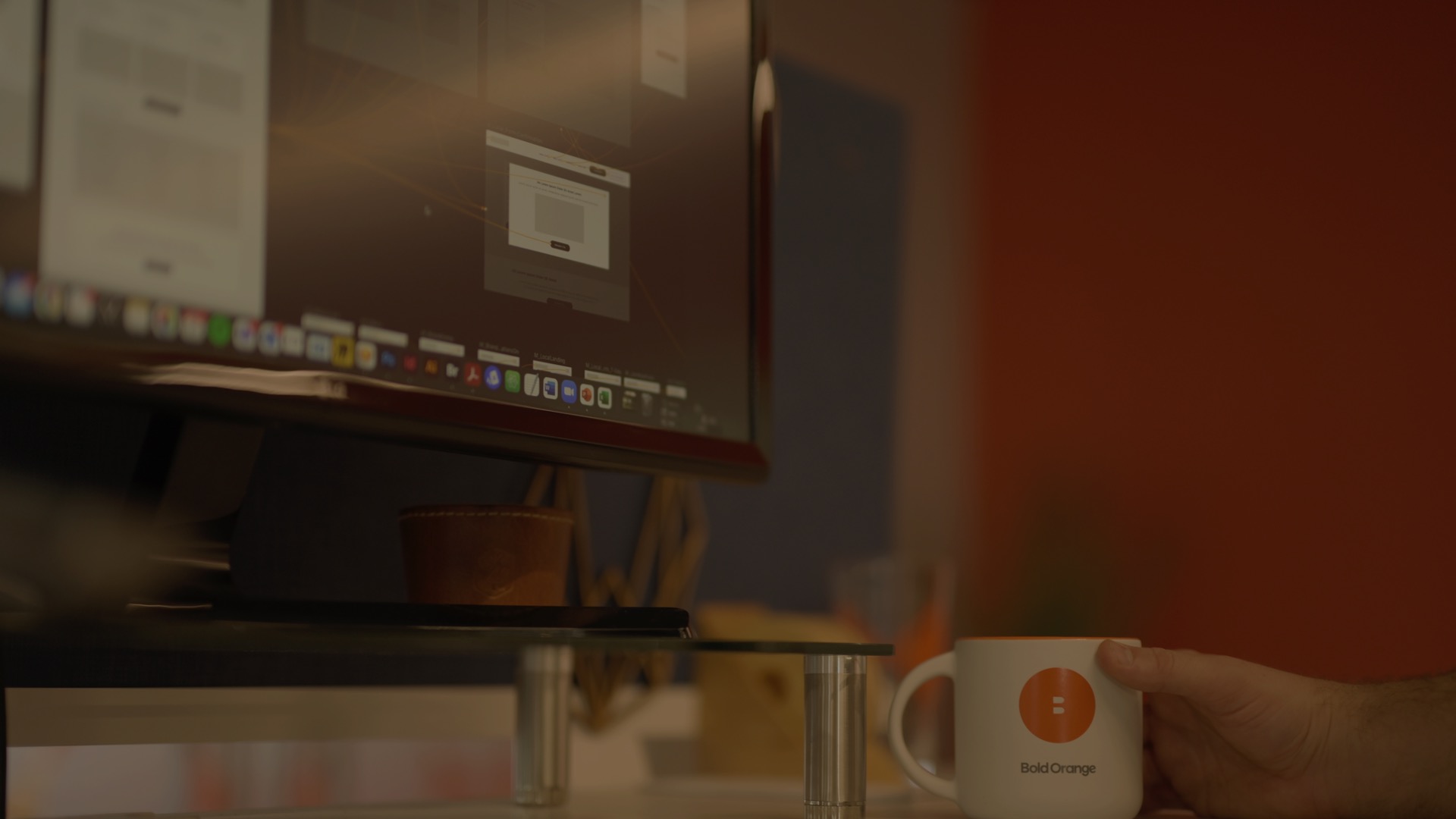2021—what a year it was. And while we seem to say that about every year recently, the past 12 months have proven that businesses and people alike are resilient. Looking ahead to 2022, we’re optimistic that perseverance will continue to be a word we all live by, both in our personal lives, as well as in our professional ones.
So, what can you expect over the next 12 months? More change, more adoption, a greater focus on the consumer and their needs, and an emphasis on employee wellness.
Companies will spend more on marketing cleanup and optimization than new platform implementations.
Over the past decade, the marketing technology landscape has exploded as evidenced by the Marketing Technology Landscape Supergraphic—growing from 5,000 to 8,000 solutions in the past five years alone. The adoption of this technology, and the data generated through its adoption, has rapidly accelerated as brands deeply invested in digital transformation to keep up with changing consumer preferences and needs through the global pandemic. Now, many companies are struggling to manage all the tools they’ve adopted and data they’ve gathered to prove a measurable return for the business. In addition to proving the effectiveness of new technology, marketers are faced with increased pressure to drive returns, as MarTech budgets have been pummeled from a consistent 10-12% of total revenue over the past 8 years to nearly half of that, at 6.4% in 2021.
In the year ahead, companies will invest more time and budget auditing, assessing, and further optimizing their MarTech stacks than they will on implementing new solutions—all with the goal of streamlining the number of technology platforms they manage and ensuring a strong return on the investments made. As a result of this shift, technology platform companies will be forced to rethink their sales approach and put more effort into helping existing clients realize the full value of the platform.
The term “O2O” (Online to Offline Commerce) will become as common as “eComm” and “.com.”
As the global pandemic continues to rage on in waves, businesses, and retailers specifically, have had to make substantial shifts in their business models to stay afloat. Examples include the explosion of buy online, pick up in-store, curbside pickup, and home delivery. Online to Offline commerce, or “O2O” is a retail strategy that turns ecommerce visitors into physical shoppers. While some still believe that ecommerce will always reign supreme, a recent study by Google found that 61% of shoppers still prefer shopping with brands that have a physical store, compared to brands that are online only. And let’s not forget the power of immediate gratification. 80% of shoppers will simply go to the store that sells their product when they want it or need it immediately. Even the most successful businesses born online, such as Amazon and its “.com” siblings, are doubling down on the promise of O2O Commerce by opening up physical locations across the country.
The pandemic has made consumers realize the convenience of these offerings and shaped their expectations for the future. Now, as we head into 2022, what was once a function of survival is going to help businesses thrive. Brands who leapt into new offerings such as home delivery, pick up at store, will now take time to refine those experiences in the year ahead. Other brands who were hesitant, will be working to catch up to meet consumer expectations.
The small and medium-sized fish will take SEO share from the whales.
Since Google’s release of the Search Quality Rater Guidelines in 2014, organic search has been anchored around the E-A-T concept i.e., a website’s ability to display Expertise, Authoritativeness, and Trustworthiness with its content. E-A-T has been considered an indirect, yet highly relevant, component of how Google evaluates page rankings. The latest update to the guidelines increasingly emphasizes the “needs met rating.” This rating quantifies how effective a piece of content is at addressing and satisfying a user’s need.
In 2022, small and medium brands that may have lower E-A-T ratings will be more likely to grab top spots on the search engine results page (SERP) because of their ability to accurately meet a user’s needs. For big brands, E-A-T alone will no longer guarantee a spot on SERP. A cohesive SEO strategy focused on addressing customer needs with high-quality, relevant content will help brands dominate organic search for the foreseeable future.
Hyper-local strategies will get prioritized by CMOs as brands work to capitalize on community-driven market share.
Regardless of size, companies big or small will need to figure out how to have a meaningful, localized presence in their communities in the upcoming year. Living through stay-home guidelines and the like have changed consumer shopping behaviors, likely for good. In fact, Ernst & Young has identified five consumer segments in their ‘post pandemic’ Covid-19 consumer behavior studies. One of the largest EY consumer segments, the Cautiously Extravagant, say they are much more likely to purchase from companies they feel are doing good for society, with 29% willing to pay a premium for brands that contribute to the community. And a study done by Bright Pearl for the US Chamber determined that 75% of consumers are planning to shop more locally in 2022.
So how do companies respond? Well, the good news is that the technology to drive localized content has been here—available to brands big and small—for some time. The bad news is many brands have found it faster (and easier) to go to market in a national way instead of local. This is likely due to the fact that brands have historically avoided additional investment because of the need to collaborate, be planful, and execute in a more segmented way when implementing programs. Given consumer trends, marketers will be pushing their teams to not take the “easy route” and instead double down on the tools, technology, and frameworks available in media platforms (i.e., social media and display advertising) to drive more authentic personalization at the local level.
The Employee Experience (the EX) will be talked about as much as the Customer Experience in board rooms globally.
Make room “customer experience” (CX), your friend “employee experience” (EX) needs some attention. A record- breaking peak of 11 million jobs were open as of November 1st. As the great resignation trend continues to be at the forefront for organizations, hiring managers will need to leverage the CX expertise often housed within the marketing function to connect more authentically with employees and improve retention and recruiting efforts. Designing an effective EX strategy isn’t dissimilar from CX strategy: employees are human just as consumers are human. With 73% of Americans stating that the pandemic has changed the way they feel about their career, they are also less fulfilled in their current jobs.
By understanding mindsets, need-states, and key desires across the employee lifecycle, employers will build stronger relationships with employees. A focus on EX will increase organizational success at attracting and retaining talent—inevitably enhancing the CX with more inspired and passionate teams.
Data moves from science to art. Brands that successfully capture and leverage zero- and first-party data will cement their positions as market-leaders.
In the year to come, a digital divide will widen between CX ‘haves’ and ‘have nots.’ This will specifically be based on the extent to which brands collect and harness zero and first-party data to personalize experiences for their customers. Right now, the CX ‘haves’ are the exception. Only 14% of marketers describe themselves as high performers – also known as those who are completely satisfied with their overall marketing performance. In addition, only 34% of consumers feel that brands treat them as individuals, even though two-thirds expect relevant product recommendations and messaging tailored to their needs.
The payoff for meeting those customer expectations is huge. The likelihood to purchase and repurchase from brands that deliver personalized product recommendations is more than 7 out of 10. So, the CX ‘haves’ will out-perform their competitors, generating an increasing amount of customer data and feedback that they can reinvest in the experience— widening the gap between the rest of field.
Win-back strategies will move from a footnote to center stage in customer journey planning.
Over the last 1.5 years, some brands have suffered from lost customers while others have had an influx of new ones who are willing to try out new products and services during these uncertain times. According to a 2021 report from McKinsey, nearly 75% of customers continue to switch brands and have far less loyalty than ever before. Whether or not things go back to “normal,” 2022 will certainly bring forward a new normal.
The new year ushers in an opportunity to lock in loyalty and engagement on a different level, meeting customers where they are emotionally. They are weary, languishing, and in need of inspiration, so win back strategies need to dive beyond the discount and into experiences that drive happiness, emotional well-being, ease and convenience, and truly display what the brand stands for.
Health care delivery will trade-in their ever-present cranes for virtual wings.
The COVID-19 pandemic wreaked havoc on the healthcare system, placing a great burden on frontline workers and hospitals in general. But what the pandemic also did, was positively break down long-standing barriers that once kept health care from the digital transformation that now defines retail, tech and financial services. During the pandemic, providers turned to telephone and video visits to provide safe care, and much to many people’s surprise, patients not only liked it but preferred it, citing high levels of satisfaction with telehealth. By adopting platforms and streamlining clinical workflows to support virtual visits, providers are learning that in order to stay ahead of their clinic competition when it comes to routine visits, prescription refills, and general consumer demand, they’ll need to go all-in on remote care. Examples of this can be seen from the likes of several large players like UnitedHealth, Humana, and Aetna who are launching lower-cost premium virtual-first primary care health plans that feature $0 copays on virtual visits.
The leaders in this space will take out the cranes that are building the next hospital wing, and instead invest in the experience and technology to enable its new brick and mortar—telehealth. These providers will completely redesign care delivery from the ground up. The future is synchronous and asynchronous virtual interactions with providers or clinical teams who can provide more coordinated and longitudinal care. Self-reporting platforms, along with dynamic monitoring of biometric and other sensor technologies like smartwatches and blood pressure cuffs, will bring real-time, on-demand care to where people live, work and play. Personalized digital content will provide individual education and self-management journeys. Health care brands who connect in- person care and virtual experiences into a single brand, multichannel ecosystem with needs-based CX will win.
The global workforce will seek authenticity as its priority.
The pandemic broke down the walls between work and life outside it. And this shift revealed something undeniable about all of us: we’re all human. From a coworker’s child making a surprise appearance on Zoom. To blocking 30 minutes on your calendar to take a midday mental-health walk. Or rescheduling a meeting so someone can grab a hard-to-find vaccination appointment. These are moments we’ve experienced over the last two years—and we’ve done it all (mostly) with grace. Because, as the curtain has been lifted, we’ve developed deeper levels of respect and appreciation for the humans who work alongside us—and the bold ideas they bring to the table, even with a sick kid or a pandemic puppy on their lap. The world has finally discovered what we at Bold Orange have been focused on for years, that leadership should prioritize people like you, and create an environment based on authentic human connections. So, here’s to more YOU in 2022!
Cheers to an inspiring and purposeful year ahead!
Stay bold,

Margaret Murphy
Founder & CEO

